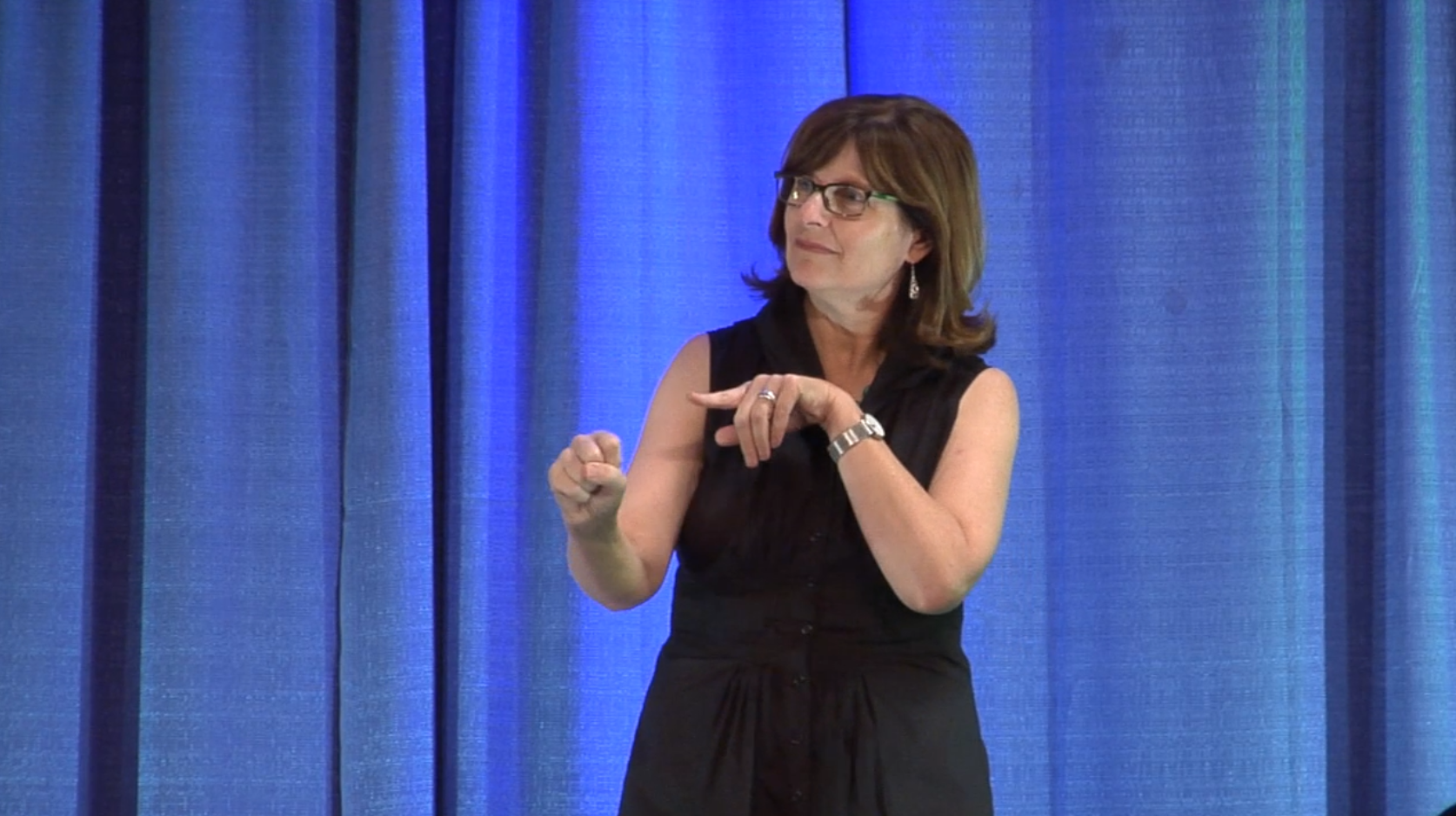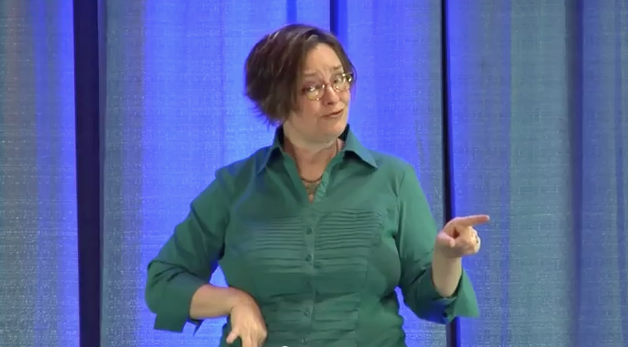
Deaf Interpreters (DI) bring a wealth of cultural and linguistic experience to Interpreter Education. Jeremy Rogers investigated the DI experience with Education Programs resulting in some practical recommendations for how to better welcome them to the table.
In 2014, Eileen Forestal, PhD, RSC, presented at StreetLeverage – Live in Austin, Texas. One of the most poignant statements she made was, “Deaf Interpreters have been involved every step of the way since the beginning of the profession. Deaf Interpreters are here to stay. We will shape the future of the profession for all interpreters whose work includes American Sign Language and English” (Forestal, 2014). In 2016, I found that working Deaf interpreters and Deaf interpreting students did not share the same outlook.
I was introduced to the concept of Deaf interpreters early on in my college education. Originally majoring in elementary education, I decided to take American Sign Language to fulfill my language requirement. I randomly selected an ASL 100 course that fit into my schedule. The instructor happened to be a Certified Deaf Interpreter (CDI). Eventually, I changed majors to interpreting and transferred to Gallaudet University for my Bachelor’s in Interpretation. While at Gallaudet, I regularly observed Deaf/Hearing interpreting teams, as well as Deaf/Blind interpreting done primarily by CDIs. Having such consistent exposure to Deaf interpreters falsely led me to believe that working with Deaf interpreters was common practice. I quickly realized after I returned to California that this was not the case.
When I began working as a Video Relay Service (VRS) interpreter, I was again surprised to find that we did not have Deaf interpreters in the call center. Staffing Deaf interpreters seemed like such a logical component in video relay settings, especially having such high call volume for Video Remote Interpreting (VRI) calls. What was even more surprising was the number of colleagues I had whom had never worked with a Deaf interpreter before. Some colleagues even scoffed at the idea that they would need a Deaf interpreting team; after all, they knew ASL and had been doing this for years! I soon realized this was no longer a simple theme I was encountering; it was a very serious problem.
Research Process
I began my graduate studies at Western Oregon University in 2014. After considering dozens of topics of interest, it struck me: What is Deaf interpreter education? What does Deaf interpreter education look like and how can it be most effective? The magnitude of these research questions was overwhelming. I needed expert guidance, and so I asked Carole Lazorisak, a working Deaf interpreter, to join my research committee. There was no way I could define most effective approaches to Deaf interpreter education, as I am not a Deaf interpreter; I could, however, reach out to working Deaf interpreters and Deaf interpreting students to gain insight into their educational experiences. In June of 2015, the first national Deaf Interpreter Conference was held in St. Paul, Minnesota. I mailed consent forms to St. Paul to be distributed at the conference; out of 208 registrants in attendance, 52 registrants completed and returned a consent form. 8 additional participants completed the consent form. In the end, 9 participants were selected for an interview. Interviews were conducted via videophone or online video conferencing platform and screen recorded for documentation. Interviews were then transcribed from ASL to English; initial transcriptions were returned to the interviewees for feedback and corrections, and, once approved, the transcripts were coded for data.
Findings of Research Study
While the full findings of the research study can be found below, I would like to share the more unexpected findings that came to light. I was disheartened to discover that there was such a common theme of interpersonal/intrapersonal strife amongst Deaf interpreters; that is, the negative perceptions that Deaf interpreters had of themselves, not only because of the experiences they had in interpreting programs, but also working in the field alongside hearing interpreters. Several interview participants reflected on their experiences in both interpreting programs and workshop settings and noted a strong sense of distrust by hearing interpreters; many of these same Deaf interpreters criticized the constant emphasis on interpreters’ hearing status rather than the skills and abilities they had to contribute to the interpreting process.
Perhaps the most disturbing theme that arose from the interviews conducted was the resigned acceptance of the conditions of our current climate. Several participants concluded that even though they recognized the injustices in place, there was very little to be done if they hoped to continue to work as Deaf interpreters. One participant went so far as to state, “I take it from hearing interpreters right now because I am working toward building my reputation and securing more opportunities for myself. If I am not careful with how I react, I am risking my job security” (Rogers, 2016). Another participant commented, “If the bickering and arguing and discord between Deaf and hearing teams continues, hearing interpreters are going to continue being resistant to working with us. And that means less work for us in the end” (Rogers, 2016).
Recommendations by Participants
Participants were asked for their insight and recommendations for improving Deaf interpreter education in existing interpreting programs across the nation; both working Deaf interpreters and Deaf interpreting students made the following recommendations:
- Stronger Deaf presence in interpreter education: participants stressed the importance of hiring more Deaf faculty members to teach in interpreting programs, as well as maintaining higher numbers of Deaf interpreting students so as to avoid any perceived or actual tokenism. Participants also encouraged interpreting programs to invite the Deaf community into the classroom to participate in interpreting exercises; this would allow for more authentic interpreting practice.
- Skill sets to be focused on: a strong emphasis was placed on Deaf interpreting students’ command of both English and American Sign Language, noting that being a heritage user of either language did not qualify a Deaf student as linguistically capable. In regards to curriculum design, participants generally believed that hearing and Deaf students should learn together in interpreting programs, but that some courses should taken independently to address skills specific to Deaf interpreters (i.e. gestural communication, expansions techniques, ethical decision-making practices).
- Support for Deaf interpreter education on a national level: as most of the participants were in attendance at the 2015 Deaf Interpreter Conference (DIC), there were several comments made in reference to the DIC. All comments made were supportive of the conference and many participants stressed the importance of continuing to provide opportunities for Deaf interpreters to gather at a national, or even regional, level; this would encourage a sharing of ideas and information, thus nurturing the growth of Deaf interpreters’ education and practice.
It is time for us, as a profession, as a community, to reflect on Forestal’s words and remember that Deaf interpreters are here
to stay. As a hearing interpreter, I am humbled and honored to have been afforded the unique opportunity to record and share the experiences of Deaf interpreters who came long before me; I wish to again thank all of the participants of this research study for their time and commitment to our work.
Questions to Consider
- What are your thoughts on Deaf interpreter education and curricula design?
- How can we address the interpersonal/intrapersonal issues plaguing the dynamics of our field?
- How can Deaf interpreter education gain more support on a national level?
References
- Forestal, E. (2014). Deaf Interpreters: Shaping the Future of the Sign Language Interpreting Profession. Street Leverage. Retrieved from https://www.streetleverage.com/2015/02/deaf-interpreters-shaping-the-future-of-the-sign-language-interpreting-profession/
- Rogers, Jeremy, “Deaf Interpreter Education: Stories and Insights Shared by Working Deaf Interpreters and Deaf Interpreting Students” (2016). Master’s of Arts in Interpreting Studies (MAIS) Theses. Paper 31. http://digitalcommons.wou.edu/theses/31











